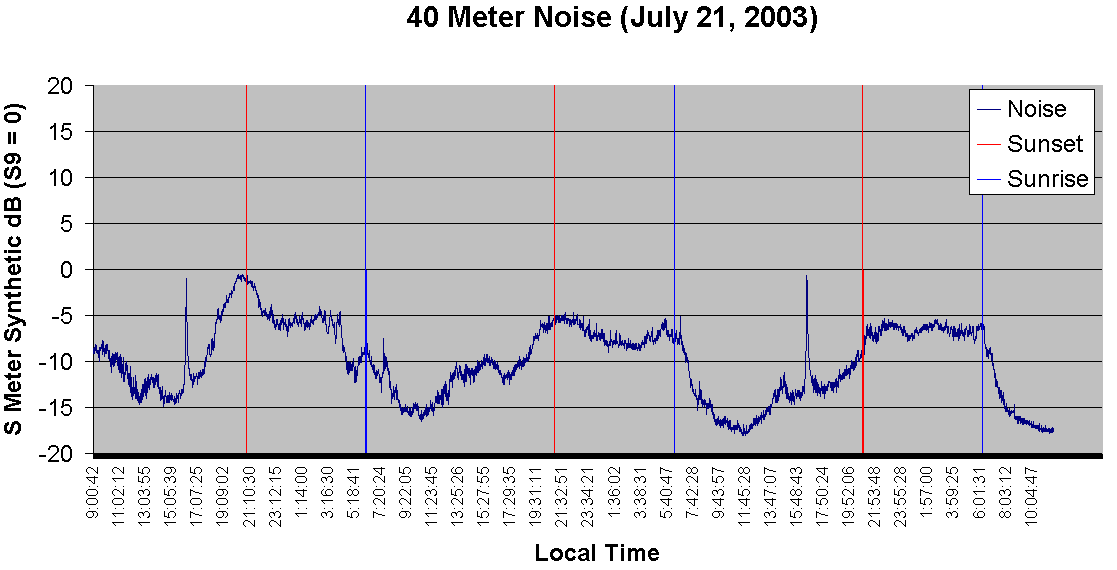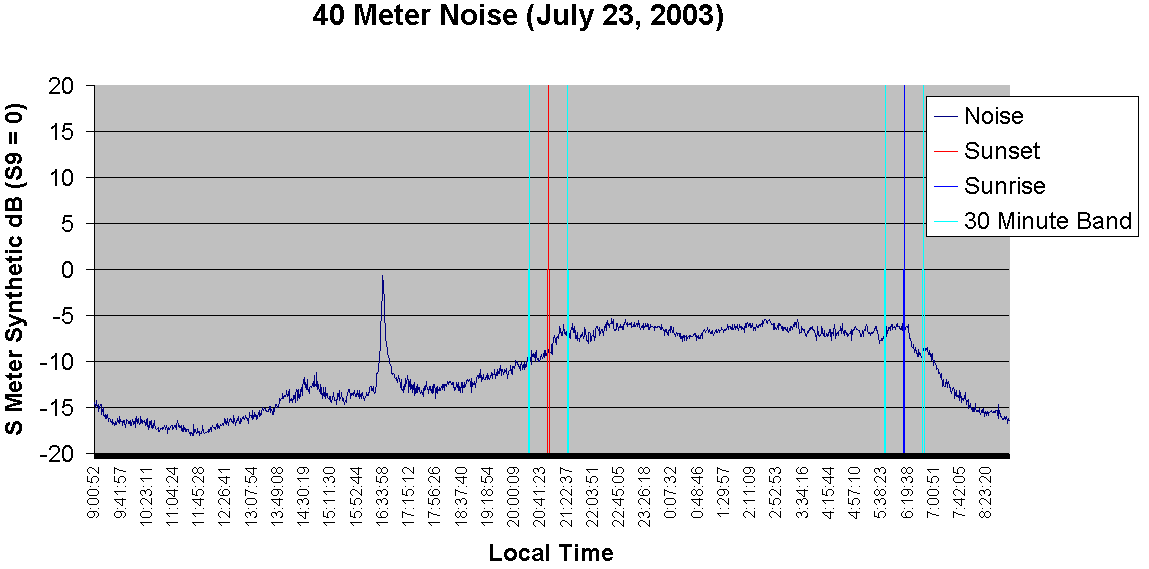 |
| Figure 1 - Three Day Noise Monitoring |
Greg Ordy
My first 40 meter monitoring session began at a local time of 9:00 AM (13:00 UTC) on July 21, 2003. The frequency monitored was 6.992 MHz, right below the 40 meter band. Data was recorded for approximately 4 days. The antenna was my 160 meter vertical which happens to resonate in the 40 meter band..
Local sunrise was approximately 6:12 AM, and local sunset was 8:52 PM.
If this page looks a lot like my first 80 meter monitoring, it should. I used the same Excel spreadsheet, and switched the data to the 40 meter information. This saved me the work of creating a new spreadsheet, when one was not really necessary. I recorded this data two weeks after recording the 80 meter data. It's interesting to go between the two pages and compare the general shape of each band. Of course don't draw too many conclusions, since the data represents a few days in one year.
Fig. 1 shows the noise level across the monitoring period.
 |
| Figure 1 - Three Day Noise Monitoring |
Monitoring began at 9:00 AM local time, three hours after sunrise. The times shown on the X-axis are somewhat arbitrary, automatically selected by Excel.
The vertical red line marks sunset, the vertical blue line marks sunrise. So, each night is captured between red and blue lines. The 0 dB point on the Y-axis represents an S9 signal level on my radio.
 |
| Figure 2 - Day 1 Monitoring |
Figure 2 captures the first 24 hour period in detail. I have added light blue vertical lines 30 minutes on each side of the true sunset and sunrise lines. The period of time which constitutes the gray line is variable and based upon a number of factors, so these lines are just to help get a sense of the passage of time.
 |
| Figure 3 - Day 2 Monitoring |
 |
| Figure 4 - Day 3 Monitoring |
 |
| Figure 5 - Daily Noise Level Overlapped |
Figure 5 overlaps the three monitored days onto a single time daily time line.
 |
| Figure 6 - Day 3 with Min/Max Values Added |
On this last graph, the minimum and maximum S Meter values have been added to the average data from Day 3. The S Meter Lite software logs the minimum and maximum data found in the period. The period is 1 minute, which averages 1200 values. So, the minimum data is the lowest strength value found in those 1200 samples. The maximum is the highest strength value found in those 1200 samples.
The day 1 and day 3 graphs suggested that a signal was present on the frequency around 16:00 local time. From the min/max graph it does appear to be the case because the minimum strength shows the spike as well. The spike shape suggests that it took about 30 minutes for the signal to rise above the background noise, peak, then fall back down. It's hard to tell if it's a true signal, or some noise phenomena.
Back to my Noise Monitoring Page
Back to my Experimentation Page